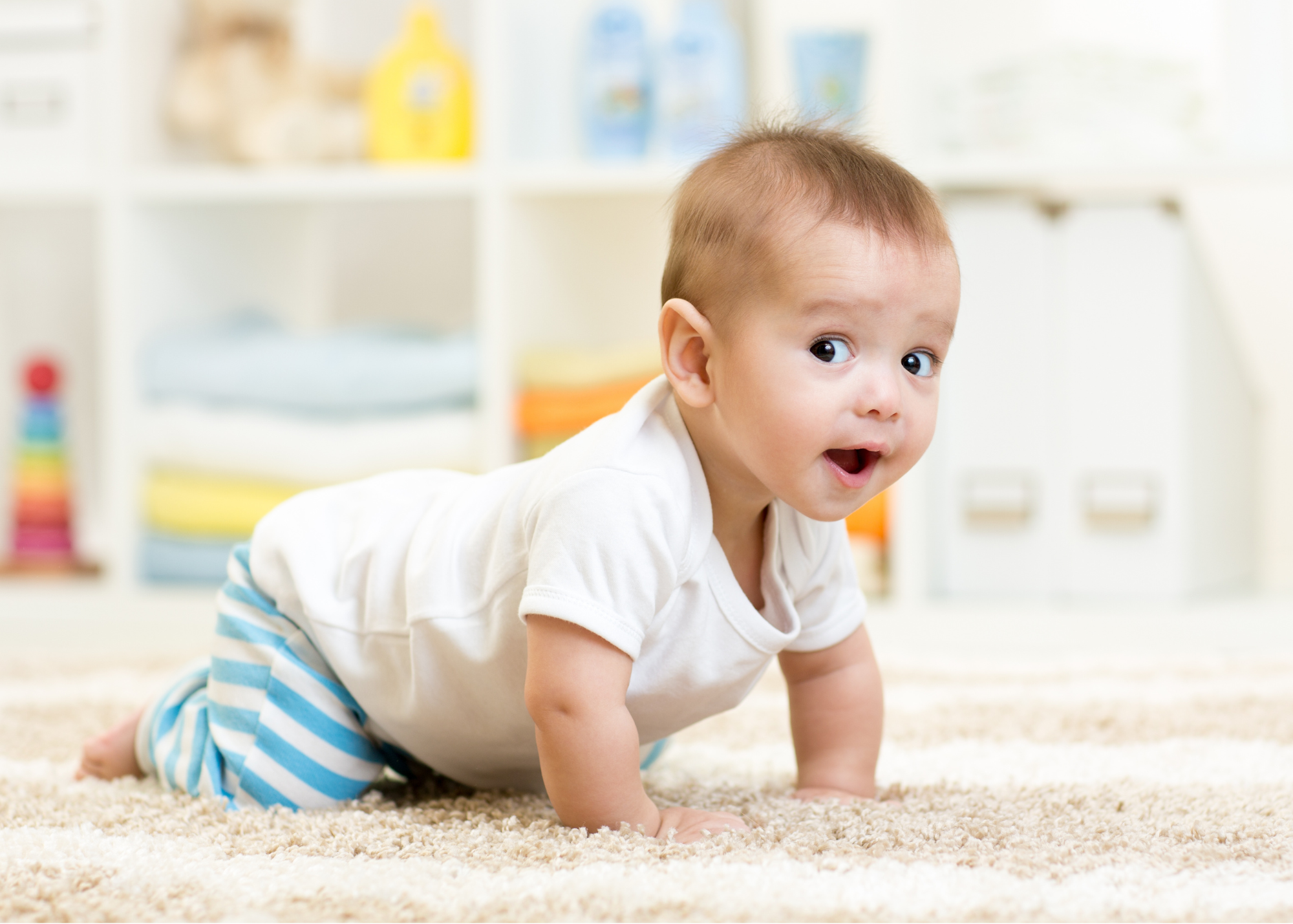The Importance of Crawling
Crawling on hands and knees is a major milestone in your baby’s life. It is the first time they get to explore on their own, which is a huge stepping stone for future milestones to come. Typically, babies may start to crawl between seven and ten months of age, but it is not uncommon for a baby to begin crawling outside of this window. Some may not crawl at all, but there are countless benefits of this skill that make promoting to your child important.
Crawling builds strength through your baby’s arms, core, and hips
Supporting one’s own weight is no easy task. Crawling on hands and knees requires whole body collaboration as opposed to an isolated body part. The shoulders, core, and hips are all working together to stabilize a very dynamic task. Bearing weight through these joints sets a strong foundation not only for walking, but for dressing, feeding, and writing in the future. Crawling strengthens the body in a functional pattern that presents in just about every milestone to follow.
Crawling improves coordination
Crawling is the first time that both sides of the body work together in opposition, which means both sides of the brain are active! These diagonal patterns activate something called the corpus callosum, which is a structure that connects right and left brain hemispheres and is important for communicating information between them. Many of the activities we complete every day require some sort of reciprocal, coordinated movement. What better time to start practicing than as babies?
Crawling fosters independent exploration
Independent mobility means independent exploration. Their newfound freedom comes from the ability to move about, touch, and experience their environment. These are all things that are crucial to cognitive development and important for developing confidence in their movement. Additionally, exploration helps to enhance their spatial and visual abilities.
Three tips to promote crawling:
-
Tummy time
Tummy time can be made fun! Babies should spend as much supervised time on their bellies as possible throughout the day. If your child does not love being on their tummy try a variety of ways to modify this activity.
-
- Over your lap or chest: human contact may help to increase tolerance to this position initially, and eventually be able to transition to a lower surface.
- Use props: mats, lights, music, mirrors, you name it! Make tummy time entertaining and fun, though they are exercising, this is no different than play time for them.
- Over a physioball: these are great for weight shifting in all directions and for altering the amount of work a baby must work against depending on the angle of tilt.
-
Prone on hands
Weight bearing through the hands will strengthen the shoulder and chest muscles for the load during crawling. You can do this by supporting their legs and progressively loading their weight onto their hands until they can hold themselves up this way. Add some hand walking too by placing toys a small distance from them!
-
Take your baby out of positional devices
It can be difficult to supervise floor time all the time, and these devices often are the safest space for a child during a busy day. But limiting the amount of time your baby spends in a supportive device such as a bouncer, walker, or entertainment center, means they get to spend more time on the floor mastering their mobility. It is all about opportunity and it is worth increasing their time spent here.
For more information on milestones and timelines, check out https://pathways.org/. If you have concerns about your baby’s development, Kids Place is here to help.







